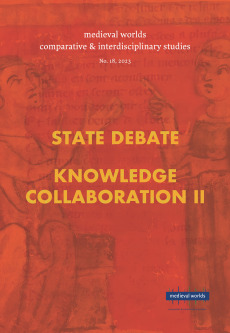medieval worlds ‒ comparative and interdisciplinary studies, No. 18/2023
State Debate and Knowledge Collaboration among Jews, Christians, Zoroastrians, and Muslims in the Abbasid Near East, II. Guest Editor: Nathan P. Gibson
Herausgegeben von Nathan P. Gibson, Herausgegeben von Andre Gingrich, Herausgegeben von Walter Pohl
Reihe: medieval worldsIn this volume we introduce the debate as a new format in Medieval Worlds. Scholars are invited to contribute to current topics of interest either with an essay or with comments to this essay. The series is opened with a lively discussion of the concept of “state” in medieval studies and offers contributions by B. D. Shaw, N. Di Cosmo, S. Gasparri and C. La Rocca, H.-W. Goetz, J. Haldon, Y. Stouraitis and R. Le Jan.
M. Wiesinger, C. Jackel and N. Orban discuss first results of their ground-breaking ERC project Arithmetic, in which German mathematical treatises from the Late Middle Ages are studied. The second stand-alone contribution by A. Wareham compares English and Chinese sources with regard to peacemaking around the turn of the 11th century. The second instalment of our thematic section on Knowledge Collaboration among Jews, Christians, Zoroastrians, and Muslims in the Abbasid Near East (guest editor N.P. Gibson) presents further studies on textual evidence of “other” (religions) as well as insights into possible uses of digital tools in this context.

